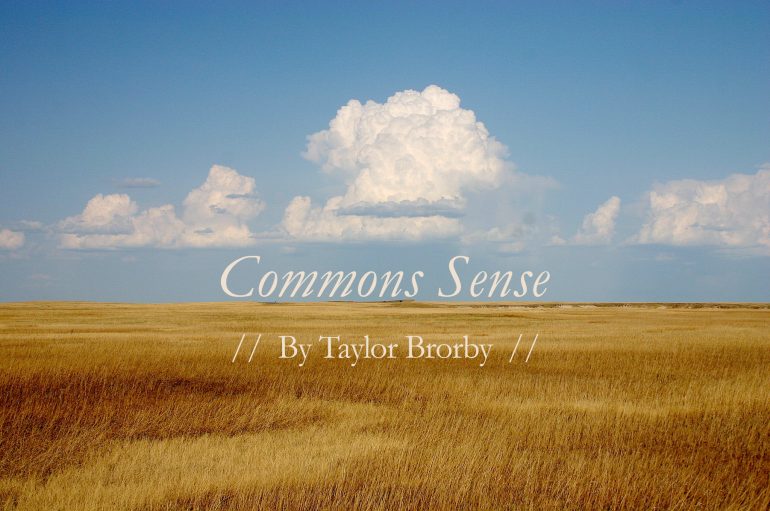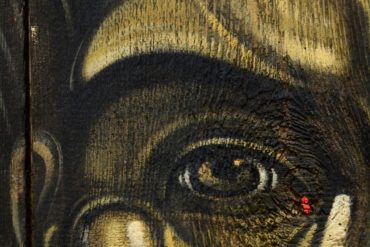The other day, as I drove through the National Grasslands, the first image of a pristine prairie I saw was a one hundred car train, coiled like a black snake, filled with Bakken crude oil. Motionless, it waited to be released, but released to where? To Chicago? Bound for New Brunswick? Maybe this would be a train that would have Amtrak pull over and wait as it bounded west for Seattle.
A Multitude of Snakes
Multiple snakes are released each day from the Bakken, slithering and sliding along railways owned by Warren Buffet, bound for refinement elsewhere, and exported around the world. These snakes know no bounds, fueling and feeding Americans’ and developed nations’ comfortable and convenient lives.
But entering the National Grasslands, seeing multinational corporate development on public land, made me ask new questions in our development of “cheap”–which, in the long run is not so cheap in environmental costs–oil: What is sacred in this land? What is beautiful?
Grass is something many of us clip and trim in our attempts to keep up with the Joneses, wanting to look like we have everything in order, that our lives are well kempt. Grass might frame our front and backyards and might be a small plot of land that we call our own, but our yards, especially as we grow into adulthood, lose a sense of mystery and adventure. It makes sense that it’s nearly impossible to fathom that we as a nation own some 3.8 million acres of National Grasslands, which is the size of nearly four Rhode Islands. How might we protect our largest yard?
The National Grasslands
North Dakota holds nearly 1.1 million acres of the total National Grasslands, the largest holding in the nation. Ninety-five percent of North Dakota’s National Grasslands are open for oil development and exploration. But no one cares about grass–it isn’t as beautiful as the Grand Tetons, the Cascades, Acadia National Park, or the Grand Canyon. And yet the nation believes it’s important to conserve and protect the wind-swept seas of prairie grass and wildflowers that dapple the buttes and hills of western North Dakota. Currently, only 50,000 acres of the National Grasslands in North Dakota are protected from oil exploration in the state, making me curious about who is speaking on behalf of grass?
In his ecological treatise, Earth in Mind, David W. Orr says, “On occasion it requires the good sense and moral energy to say no to things otherwise possible and, for some, profitable.” Right now it’s profitable to drill and frack for oil on land no one seems to care about; it seems prudent to help restore an economy struggling to regain its footing after a near total economic collapse to drill on grassland. Yet, what we are gaining in economic security–which, really, isn’t that much security against things like drought, hurricanes, rising oceans, and loss of biodiversity due to our continued stubborn reliance upon a carbon-dependent lifestyle–in the long run is tempered by our loss of beauty in the natural world. Who will grow in viewpoints of care and conservation if the landscapes we hold dear are viewed solely in economic terms? The economy that has fueled our thinking about oil development and reliance does not require the bottom line go deep enough to measure the true economic costs of oil, draining aquifers, spilling brine on vital cropland, trains derailing around the country, and the increase in the overall temperature of the earth.
As the black snakes continue to slither across the country, we might remind ourselves to put in place the precautionary principle, which helps show that markets can change and do adapt, allowing us to more easily wean ourselves from our growing dependence upon the finite products of oil and gas.
In the conversation we are not having about the Bakken oil boom, we often stay silent about things of beauty (and for good reason): Those things we hold beautiful transcend economic measurements of profits and gains. Once the National Grasslands are ruined, they are gone. Once the Missouri River watershed becomes even more toxic due to increased brine, oil, and other waste spills, the nation’s agricultural belt will suffer. We can move oil wells, but we cannot move the National Grasslands, aquifers, or Missouri River. As Wendell Berry says, “Do unto those downstream as you would have those upstream do unto you.”
So far North Dakota, which is about as far upstream as you can get in this country, has modeled an ineffective and mismanaged boom–one where spills are commonplace, flaring of 36% of natural gas is the norm, and having no regard for the stewardship of the environment is the expectation.
Thinking Beyond the Boom
In our theological thinking about conservation and stewardship, it is best to remember that the Bible promises an abundance of life, not a life of abundance. North Dakota, with its short-term high salaries, currently low unemployment rate, and abundance of jobs, creates the imagined reality that there will be plenty for all. Yet when we speak in the language of a boom, it implies that a bust is not far behind. Not only will business bust and communities be laid waste from ill-planned growth models, but the prairie, watersheds, and cropland we so desperately rely upon will serve as a haunting reminder that we did not invest in what is beautiful, we invested in what was crude and base.
Theodore Roosevelt, in his speech at the Grand Canyon, said, “Leave it as it is. You can not improve on it. The ages have been at work on it, and man can only mar it. What you can do is to keep it for your children, your children’s children, and for all who come after you, as one of the great sights which every American if he can travel at all should see.” The same recommendation can apply to the Little Missouri National Grassland in North Dakota. In seeing an ocean of prairie grass waving in the wind, unspoiled by pump jacks and railroad, a person better sees her relationship to the larger world and the immense beauty we experience on the planet. The reminder that we are marring the western half of North Dakota is not only true, it is a lived reality that our history will remember that when faced with conservation or loving economic profit, we chose the bottom line rather than loving what rests in the bottom of our being.
In Genesis 2, the rich story about a garden in Eden, filled with trees bearing fruit that were pleasing to the eye, is told. Trees providing shade, bearing pomegranates, pears, apples, and fruit of every kind grow in rich, fertile soil. The first person, named Adam, is linked to the soil that he comes from. Norman Wirzba in his essay, “Dramas of Love and Dirt: Soil and the Salvation of the Earth,” says,“That the first human being was called adam meant that the biblical writer wanted us to understand that human life derives from soil, needs soil, and is utterly dependent upon it for food, energy, building materials, comfort, and for inspiration. Similarly, the fact that soil is called adamah would have had the effect of reminding human beings that soil also depends on us in certain respects, and that we have responsibilities to it. Adam and adamah are inseparable.”
And our responsibilities are manifold–we must ensure the continued production of topsoil, enough water for croplands and wild animals, enough prairie grass to send ripples of joy across our skin, and that wildflowers can greet us each spring.
In Genesis 3, we meet the famous serpent in the garden. And, so it seems, today we are faced with our own serpents, though these serpents tend to sit in corporate offices, in black suits, driving the economic principle of rape and pillage. It is not that we are a fallen species, but that by choosing to invest in serpents named Halliburton, Tesoro, and British Petroleum, we continue to fall.
A Renewable Route
Since we live in the supposed Information Age, we know what we have to do: get off the dead weight of fossil fuels and onboard with the life-giving properties of renewable resources, like the sun. We might demand more of ourselves, constructing buildings like the Bullitt Center in Seattle, which composts its own waste and uses this as a building principle: everyone should be within 30 feet of sunlight so that the light cannot only get to them, but that they might be able to get to the light.
In this line of thinking it makes sense that we are an interrelated species on an interrelated planet. The world is watching the oil development in western North Dakota and watching megacorporations make many fracking mistakes. Will we learn self-restraint? Or will we continue to use a finite resource on a finite planet, rather than investing in and choosing life-giving renewable energy?
Life does find a way to keep going, and, ultimately, the grasslands that have been here longer than we have will keep going. The real question is if we will be around to enjoy them?





